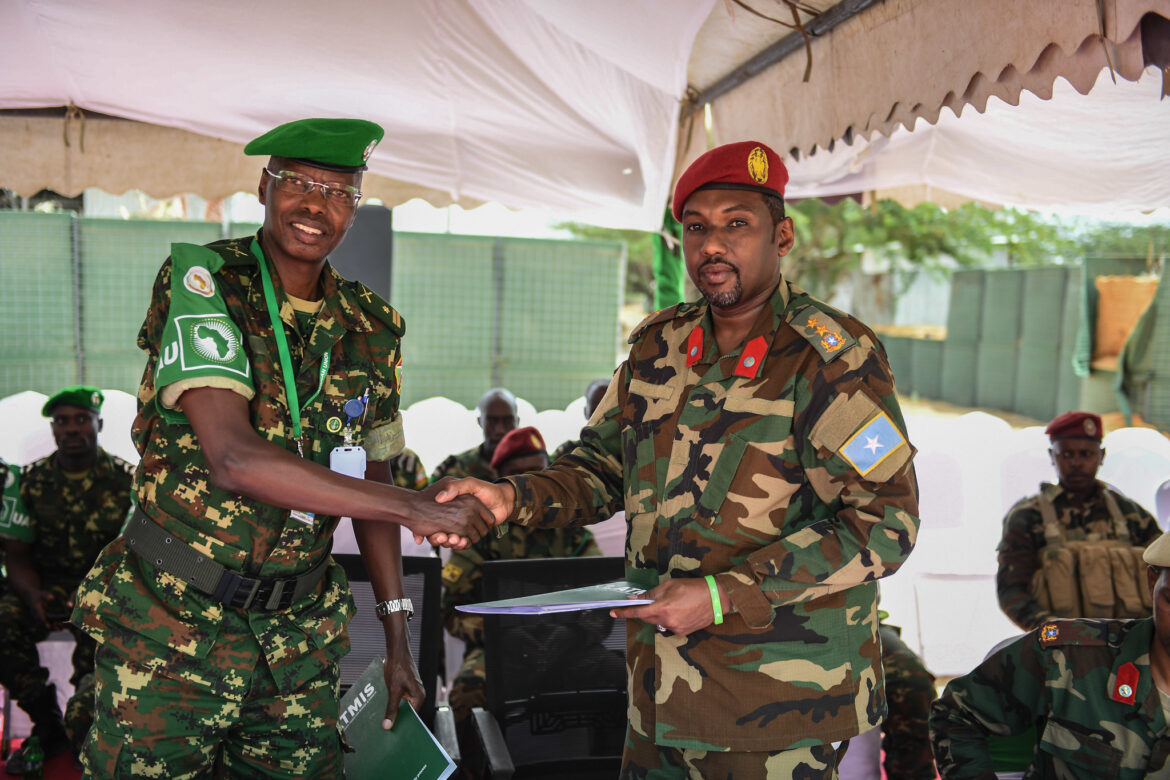Somalian Defense Minister Abdelkader Mohamed Nour announced the start of the first phase of the withdrawal of the African Union Transitional Force in Somalia (ATMIS), on June 11. The first part of these forces, which consists of 2,000 soldiers, will leave the country at the end of the month. These forces will transfer their responsibilities to the Somalian Armed Forces upon their departure. Undoubtedly, this step will have direct repercussions, not only on Somalia, but also on the Horn of Africa. This will most likely prompt neighboring countries to change their approach towards dealing with the ongoing conflict within Somalia.
Early Preparations
It is expected that the ATMIS force will withdraw in four main stages, which has prompted Somalia to prepare in advance for that. Somalia aims to raise the combat level and capabilities of its forces to about 24,000 soldiers, whose aim will be to take over when the mission fully withdraws by December 2024.
Numerous reports indicate that the Somali government is working to prepare trained forces to as replacements to ATMIS who will carry out their tasks, and the Somali government is already seeking to equip 15,000 soldiers by 2023 and has sent thousands of soldiers for training in various countries abroad.
The Somali Defense Minister, Abdul Qadir Mohamed Nur, affirmed that the armed forces today are more than capable of taking over security from the ATIMS forces, noting that the security handover plan will continue as planned until the last ATIMS soldier leaves by the end of December 2024. A team of Observers conclude that the role of the Somali forces in confronting the “Shabab al-Mujahideen” has grown of late making them more qualified to take on greater responsibilities and fill the void left by ATIMS. This is especially valid given after the readiness check of several Somali battalions who were trained abroad.
Various Challenges
The Withdrawal of ATMIS forces from Somalia by 2024, the transfer of their mission and responsibilities to the Somalian Armed Forces faces several challenges represented in the following:
- Tribal and Ethnic Loyalties in the Armed Forces: Even though the Somalian Armed Forces were not subject to division even with the escalating conflict between former President Mohamed Abdullah Farmajo and opposition clans and politicians. These rivalries did not disappear in the Armed Forces, just as the relations between the current President Hassan Sheikh Mahmoud and Prime Minister Hamza Abdi Berri, who represent different clans, are still characterized by tension. The Al-Shabab movement sought to exploit these tensions in the recent period in order to reduce the pressure imposed by the military operations launched by the Armed Forces against it.
- Lack of Qualitative Abilities: Several reports indicate that despite the efforts of the Somali government to send large numbers of troops to train abroad, there are logistical challenges related to the need for more equipment and weapons. The government is still calling on the international community to lift the ban on importing weapons from abroad as it appears that the armed forces are less well equipped than ATMIS. This is due to a lack of sufficient equipment, especially anti-IED equipment and IED-resistant vehicles, which are the main tactics used by Al-Shabab to carry out their attacks. Without a doubt, this shortage of equipment hinders the ability of the Somalian Armed Forces to undertake their tasks.
- Al-Shabab’s Ability to Adapt to Any Situation: Government forces, and their allies, launched successful attacks against the positions and leaders of the Al-Shabab, prompting their withdrawal from several cities and regions in central Somalia. However, Al-Shabab was keen to send messages of its capability to launch counterattacks, specifically targeting government forces.
Hence, there are legitimate fears that the withdrawal of thousands of ATMIS soldiers by the end of this June will lead to a security void that Al-Shabab may exploit to escalate their operations further post the withdrawal of ATMIS.
The Impact of the ATMIS Withdrawal
With the withdrawal of ATMIS inevitable, their security void will leave several lasting impacts on Somalia that are represented in the following:
- Entry of African forces from neighboring countries: These developments may prompt some neighboring countries to intervene militarily by sending forces to Somalia, given that Al-Shabab will likely move to openly threaten the neighbors of Somalia. Countries such as Ethiopia and Kenya may undertake these interventions, given that they have past experiences with Al-Shabab that has impacted the internal state of their security.
- Increased Influence of Russia: Russia seeks to strengthen its security and military relations with Somalia, potentially expanding its presence inside Somalia in turn, in the Horn of Africa. This is especially after attempts to build a military base in Sudan failed. Somalia now more than ever needs support to improve its counterterrorism efforts, whether through training, weapons shipments, or supporting efforts to lift the embargo on arming the Somalian Armed Forces.
- Increased American Military Presence: Perhaps obstructing Russia’s efforts to strengthen its role in Somalia is one of the reasons that could push the US to change its policy in dealing Somalia. It is likely that the US would move to send more troops to Somalia which the administration of President Joe Biden had already given the green light for, on May 16, 2022. US forces in Somalia, are currently coordinating with the Somalian Armed Forces on the ATMIS withdrawal and their efforts confront Al-Shabab. US forces have provided air cover for the military operations launched by the Somalian Armed Forces against Al-Shaba, and they have also trained elements and battalions of Somalian special forces.
- Increased Targeting of ATMIS Forces: Al-Shabab will likely increase its attacks against the ATMIS forces or even neighboring countries supporting operations of the Somalian Armed Forces. This is in an attempt to force these countries to withdraw their forces, specifically Ethiopia and Kenya. Al-Shabab attacked Ethiopian forces on June 7th, claiming responsibility for the attack on Ethiopian forces in the town of Dolo located near the border between Ethiopia and Somalia.
Difficult Choices Ahead
The withdrawal of ATMIS from Somalia may put the country in the face of difficult choices. This is in light of the attacks by government forces against Al-Shabab movement, who have escalated their attacks inside Somalia and neighboring countries. This will most likely force the hand of these countries to expand the scope of their coordination among to combat Al-Shabab effectively in the future.


